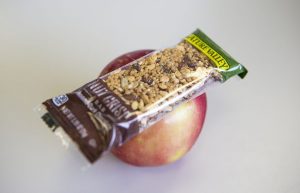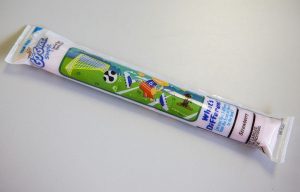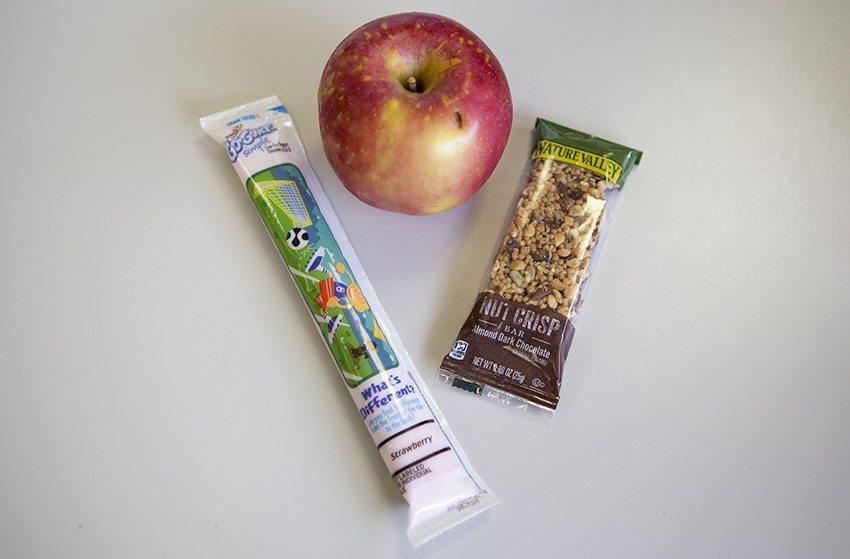
Common sense involves a natural knowledge of the correct way to act, think, speak or in this case eat. Yet common sense often becomes based off of common knowledge and common knowledge often becomes based off of media and (to complete the circle of life) media sometimes lies.
There exists a list of foods to avoid like a Starbucks on Monday morning. Some foods on this list are the usual perpetrators, those basic bad guys, those condemned carbohydrates.
Yet, some foods are masters of the art of disguise. These sneaky posers receive the seal of approval on TV and in common culture. They gain this false reputation through manipulation of ignorant and poorly informed people, masquerading as “healthy alternatives”.
These foods rather obvious or elusive fit under a category termed (mostly by myself) the Blacklist. Which blacklist foods have swindled you?
Orange Juice
Orange Juice, the poster child of breakfast in America. From 50s sitcoms to current day, orange juice (as well as many other fruit juices) remains a beloved staple of traditional breakfast. Described by countless television ads as a “glass full of sunshine”, orange juice is a difficult drink to condemn.
Yet is this glass “full of sunshine” really as healthy as everyone says?
The facts say no. Oranges in their natural fruit state remain a fantastic source of vitamin C and healthy sugars. The first problem occurs in the processing when about 16 oranges are squeezed into a quart. That’s an average of four oranges per glass!
Too much of anything is not healthy. Yet if the negative effects of Orange juice stopped there, it wouldn’t be mentioned in this blog post. This much orange in one solution would tend to run on the acidic side. Due to the American preference to sweet breakfast foods, sugar inserted itself into the recipe without a second thought.
In an article titled How Orange juice is slowly killing you (a bit far perhaps but point taken) Alexander Heyne, a healthy eating author describes the negative effects of this elusive blacklister.
“Fruit juices can be high-carb and high-sugar. Even though they’re ‘good for you’ there are better sources of nutrients with a fraction of the sugar (or none at all). Eat fruit, don’t drink it.”
The moral here: Fruit good, juice bad
Lots of Yogurt Brands
Yogurt is perhaps personally one of the most tragic additions to the blacklist. Yet fortunately, only certain brands have strayed from the straight and narrow.
We’re not even going to start on frozen yogurt. Most should know that ice cream and Fro-yo are pretty close cousins. Admittedly, fro-yo is the lesser of the two evils but still remains a candidate for the list.
The offender here is the “healthy yogurt”, the sorts advertized for children’s lunches. There is a ligament good breed of yogurt, one that does not belong on the black list. However, the disconnect occurs when the less than healthy yogurt impersonates the real stuff.
Yogurt analysation (and yes I just said yogurt analysation) requires a keen eye and the ability to read a nutrition table. Check for the basic bad guy, fructose corn syrup and for increased amounts of fat and sugar. Some low-fat products contain as much or more sugar than their standard counterparts.
One relatively safe product, I have found is Fage Yogurt. This brand contains average amounts of fat and sugar. Add natural honey to the plain mixture for flavor (which this version is admittedly lacking) or buy one of the flavored

mixtures.
Tofu
If vegans had a flag this food would be front and center. The tofu movement emerged in response to the apparent “need” for a protein source other than real meat. Reportedly (notice reportedly), tofu lowers cholesterol and provides this organic protein source.
Yet in actuality, tofu provides little nutrient enrichment. This squishy product earned a spot on the blacklist not because of its nature but because of its mode of processing. Tofu processing firstly does not remove the anti-nutrient and toxins naturally found in the soy bean. To clarify anti-nutrients hinder the absorption of nutrients.
To add to the atrocities of tofu, various toxins from preservatives are added to the product from the liquid it soaks in. The accumulation of these assorted toxins may even be detrimental to one’s health. Mercola reports thyroid problems, weight gain, soy allergies, reproductive disorders, brain damage and even Cancer from tofu and tofu related products.
In short stay away from tofu and soy products as a general rule.
Granola Bars
Granola bars posses the lead role of about 95% of health food commercials. Similar to yogurt, the standards of granola bars depends upon the ingredients.
A recent trend in the health industry calls for “organic” energy or granola bars that imitate the taste of basic dessert items. You’ve all seen the “I can’t believe it tastes so good” or the “but wait it only has 35 calories,” sort of commercials. Somehow these genius companies are reported to construct a candy like product that has little to no effect on the human body. The phrase “too good to be true” carries some weight here.
Tip: if it tastes just like a Twinkie or brownie, it basically is. If a company was able to create something so similar to the actual desert with such a decrease in negative impact, those original unhealthy manufacturers would cease to exist.
This doesn’t mean that healthy food has to taste bad however. It simply means that it will never taste quite like a real brownie or ice cream sundae.
CookingLight dispels the stereotypical reputation of the granola bar.
“Many energy bars are filled with high fructose corn syrup, added sugar, and artery-clogging saturated fat. Plus, some bars (particularly meal replacement varieties) contain more than 350 calories each―a bit more than “snack size” for most people. “-CookingLight
Not all energy bars are unhealthy but show some digression before putting just anything in the cart.
Low fat and Diet Products (the irony!)
Did you know there can be more calories in low fat foods than in the regular version? Doesn’t seem right? It’s not and here’s why.
Fat adds greatly to the flavor of most foods. When fat is taken away the result is often a bland unsatisfactory product. Therefore, those sneaky manufactures add sugar and artificial flavors and sweeteners. These added products, often have more calories than the removed fat.
Fat is not a bad word in the health world. Many people take it to be but in reality fats or lipids are naturally occurring molecules. The human body needs and benefits from good fats such as monounsaturated fats and polyunsaturated fats. The one to look out for is the evil twin brother unsaturated fat.
Unfortunately low fat and diet products often do away with the former and keep the latter according to WebMD.
“Sometimes “fat-free” is also, well, taste-free. And to make up for that, food makers tend to pour other ingredients — especially sugar, flour, thickeners, and salt — into the products. That can add calories.” –WebMD
In short make sure diet and fat- free foods are not worst off than the original.
Try to avoid these black list foods except for the occasional splurge. Check the ingredient’s list and never let advertisement sway or blur factual information. Do this and you’ll be on your way to a healthier lifestyle.
The choice is yours. Will you be nutty about health?
To read more from Health Nut, check out Inside my Head.

